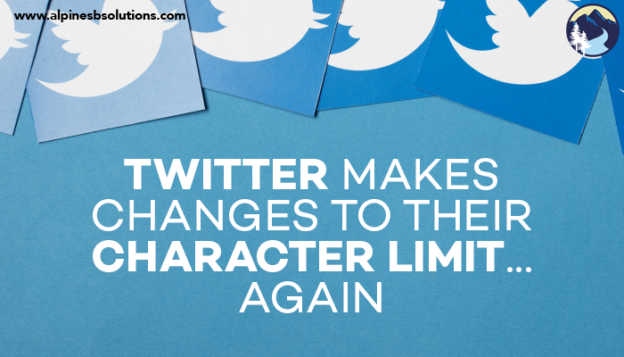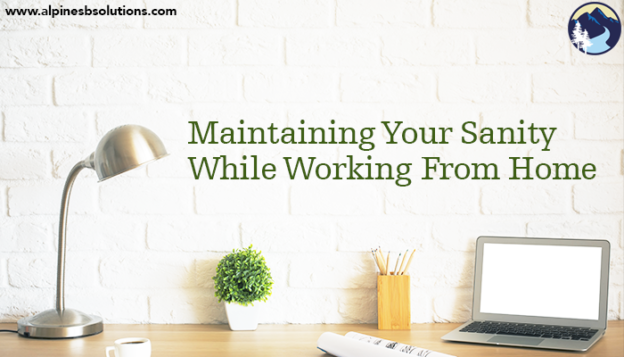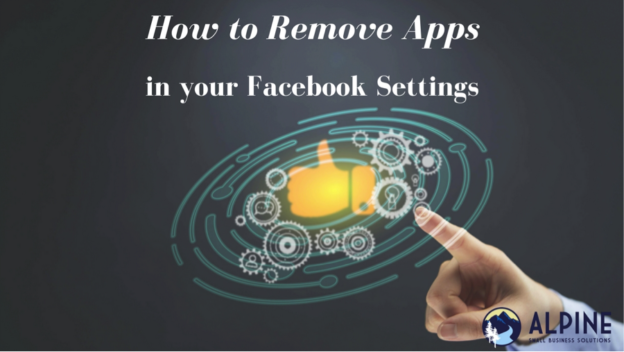Number 2 pencils are being sharpened, school buses are traversing through the city, kindergarteners are waddling around wearing backpacks as big as they are – it’s back to school time once again!
The start of the school year is a natural fresh start in our calendars, regardless if you are sending children off to classes (or heading off to class yourself). It’s a time to shift gears from hopping aboard the boat at the lake to hitting the books. Back to school organization is just as important for entrepreneurs as it is for students.
Get ready to start the year strong with our back to school organization guide for the entrepreneur.
- Get Your Schedule Sorted Out
Students rely on a schedule to be where and when. Sure, you may not have to report to geometry in room A203 anymore. But that doesn’t mean you shouldn’t follow a schedule.
 It’s the paradox of the entrepreneur life. You hold autonomy over your schedule, but you should use that autonomy to set restrictions. Ask any successful entrepreneur and they will tell you a schedule is key (not convinced? Check out this post on why you need to set your work hours when you work from home).
It’s the paradox of the entrepreneur life. You hold autonomy over your schedule, but you should use that autonomy to set restrictions. Ask any successful entrepreneur and they will tell you a schedule is key (not convinced? Check out this post on why you need to set your work hours when you work from home).
Take some time to develop a work schedule that will work for you. Maybe your peak productivity hours are early morning and late afternoon. Schedule your workout for the midday slump. Maybe at 3 you need to shuttle your kiddos around to after school activities. Start your workday a bit earlier. Making a schedule sets you up to be organized and ready to rock this year.
- Stock Up on Supplies
Most stores host back to school sales for supplies like paper, pens, post-it notes, and even electronics. Conveniently, all tools you use to run your business! Take advantage of these sales and stock up on anything you will need throughout the year.
 If you are lucky enough to have a storage area, pack it to the brim with discount supplies. If you haven’t already, make sure your supplies are organized and easily accessible.
If you are lucky enough to have a storage area, pack it to the brim with discount supplies. If you haven’t already, make sure your supplies are organized and easily accessible.
- Get Ready to Learn
Students everywhere are getting ready to learn and so should you! Plan out a duoable learning schedule you can follow throughout the school year.
Maybe you take an online course through Udemy where you dedicate one hour Tuesday evenings to. Maybe it’s reading a business development book for twenty minutes a day (try this list of top books every entrepreneur should read). Always be learning. It’ll make you a better entrepreneur (and more well-rounded person).
- Gather Up the Timelined Checklists
Checklists are a great organizational tool. They help you remember those dozens of small tasks you need to do without letting something fall through the cracks. Checklists are your friend. At the start of the school year, collect ones you will rely on the following months.
Here are a few we recommend:
- Beginning of the Year Checklist
- Summer Slump Checklist
- End of Year Checklist
- Linkedin Personal Branding Daily, Weekly, Monthly, Quarterly Checklist
- Test Out Productivity Hacks
 Productivity hacks are great. They let you work smarter, not harder. Pick a few new productivity tricks to try out this school year. You can even pick a new trick each month to continually make yourself more effective.
Productivity hacks are great. They let you work smarter, not harder. Pick a few new productivity tricks to try out this school year. You can even pick a new trick each month to continually make yourself more effective.
Here’s a round-up of some great tips to get you started:
- Streamline your business with these free tools
- Keep your to-do list short (a few items or less)
- Test out the pomodoro method of time management
- Try batching your tasks
- Plan your day the evening before
Use these organization tips to start your school year off right. Don’t forget, Alpine Small Business Solution is always here to lend a helping hand. We can assist with any aspect of business building. Let us help your company grow this school year. Reach out today with a quick call or email to get started.




 As an entrepreneur, you are already stretched pretty thin. I get it! The last thing you want is another item on your to-do list. Fortunately, this one really does only take a few minutes a day. If you need to, download the LinkedIn app on your phone so you can update it while waiting in line at the grocery store or during your commute.
As an entrepreneur, you are already stretched pretty thin. I get it! The last thing you want is another item on your to-do list. Fortunately, this one really does only take a few minutes a day. If you need to, download the LinkedIn app on your phone so you can update it while waiting in line at the grocery store or during your commute. At some point each week, make sure you are completing the following tasks.
At some point each week, make sure you are completing the following tasks. Each month, take the time to accomplish the following tasks.
Each month, take the time to accomplish the following tasks. Each quarter, take time to comb over your profile and make any necessary tweaks.
Each quarter, take time to comb over your profile and make any necessary tweaks.
 The cost per impression tends to be among the lowest for promotional products compared to other methods of advertising.
The cost per impression tends to be among the lowest for promotional products compared to other methods of advertising. For raising awareness among the target audience, promotional products lead to
For raising awareness among the target audience, promotional products lead to They say
They say
 Previously, a reply would involve a tweet beginning with “@username” and then the user’s message. The username character count went towards the 140-character limit. If a few users were involved in the conversation, the character total quickly got eaten up. It also made it difficult to actually see the message content since it was after a long string of usernames
Previously, a reply would involve a tweet beginning with “@username” and then the user’s message. The username character count went towards the 140-character limit. If a few users were involved in the conversation, the character total quickly got eaten up. It also made it difficult to actually see the message content since it was after a long string of usernames Twitter’s goal is to make conversations easier to follow, allowing users to focus on the discussion of the tweets and not the lists of those in the discussion.
Twitter’s goal is to make conversations easier to follow, allowing users to focus on the discussion of the tweets and not the lists of those in the discussion.  In the past few years,
In the past few years, 
 Ask yourself if everything needs to be done. Then ask yourself again. Much of what we do can be automated or streamlined. Can you batch tasks to get them done more efficiently? Is there a low-cost service you can invest in to automate these repeating tasks? Is the output on a task really worth the time and effort cost? Ruthlessly evaluate everything on your to-do list and then eliminate, automate, and streamline.
Ask yourself if everything needs to be done. Then ask yourself again. Much of what we do can be automated or streamlined. Can you batch tasks to get them done more efficiently? Is there a low-cost service you can invest in to automate these repeating tasks? Is the output on a task really worth the time and effort cost? Ruthlessly evaluate everything on your to-do list and then eliminate, automate, and streamline. Taking a few minutes to write everything down makes a world of difference. Seeing everything in black and white makes it instantly less stressful. A list can be tackled. A list has an end point. A list means we are no longer wasting precious mental energy trying to keep track of everything in our mind. Writing it down helps us “clear our heads” and see the full picture, allowing us to more effectively strategize.
Taking a few minutes to write everything down makes a world of difference. Seeing everything in black and white makes it instantly less stressful. A list can be tackled. A list has an end point. A list means we are no longer wasting precious mental energy trying to keep track of everything in our mind. Writing it down helps us “clear our heads” and see the full picture, allowing us to more effectively strategize. You can spare fifteen minutes to
You can spare fifteen minutes to  Now that you have returned to the grind, ready to tackle your projects, it is important to proactively
Now that you have returned to the grind, ready to tackle your projects, it is important to proactively 
 You can’t work as a
You can’t work as a  This insurance is added to a property insurance policy or is included in a package policy.
This insurance is added to a property insurance policy or is included in a package policy. Disability insurance is especially important for
Disability insurance is especially important for Fortunately, you have several options. If you’re married, check out your spouse’s policy. You can join the Freelancer Unions’ National Benefits Platform. You can go through a faith based health care sharing service. Check out your state’s
Fortunately, you have several options. If you’re married, check out your spouse’s policy. You can join the Freelancer Unions’ National Benefits Platform. You can go through a faith based health care sharing service. Check out your state’s 

 What actually happens when we fail to structure our day isn’t the
What actually happens when we fail to structure our day isn’t the  Just like you need boundaries with your time, you need boundaries with your space. Find a place in your house that’s just for work. Ideally, it will be a separate room. But, if you don’t have the space for a full office, that’s okay. Maybe you can set a desk in your bedroom or the living room. What’s important is you have somewhere to go with minimal distractions.
Just like you need boundaries with your time, you need boundaries with your space. Find a place in your house that’s just for work. Ideally, it will be a separate room. But, if you don’t have the space for a full office, that’s okay. Maybe you can set a desk in your bedroom or the living room. What’s important is you have somewhere to go with minimal distractions. Sometimes, we get so into our flow we don’t realize we’ve been working for hours straight. The best way to fight stress and burnout is proactively, so it’s important to avoid this work grind. Schedule breaks into your day. Maybe it’s 10 minutes every hour with a half hour lunch break. Maybe it’s the Pomodoro method, where you work for 25 minutes and take a five-minute break. Play around with different strategies and find
Sometimes, we get so into our flow we don’t realize we’ve been working for hours straight. The best way to fight stress and burnout is proactively, so it’s important to avoid this work grind. Schedule breaks into your day. Maybe it’s 10 minutes every hour with a half hour lunch break. Maybe it’s the Pomodoro method, where you work for 25 minutes and take a five-minute break. Play around with different strategies and find  This isn’t about becoming one of those scary “don’t you dare interrupt me while I’m working” work witches.
This isn’t about becoming one of those scary “don’t you dare interrupt me while I’m working” work witches. Some people (very few mind you) can work in grunge clothes without it affecting their work. Good for them!
Some people (very few mind you) can work in grunge clothes without it affecting their work. Good for them!
 So, you just found a great
So, you just found a great  Maybe your need is internal. You need help maintaining the status quo, or you’re ready to take things to the next level. A virtual assistant can be a great help with
Maybe your need is internal. You need help maintaining the status quo, or you’re ready to take things to the next level. A virtual assistant can be a great help with  Be ruthless about a task’s necessity. Stop and really evaluate whether the task even needs to be done. You’d be surprised how many things we do on autopilot, things that we should eliminate. As Timothy Ferris, author of The 4 Hour Workweek says, “never automate something that can be eliminated, and never delegate something that can be automated or streamlined.” You shouldn’t waste time outsourcing tasks that aren’t imperative. Make sure it’s necessary and cannot be automated before you delegate it.
Be ruthless about a task’s necessity. Stop and really evaluate whether the task even needs to be done. You’d be surprised how many things we do on autopilot, things that we should eliminate. As Timothy Ferris, author of The 4 Hour Workweek says, “never automate something that can be eliminated, and never delegate something that can be automated or streamlined.” You shouldn’t waste time outsourcing tasks that aren’t imperative. Make sure it’s necessary and cannot be automated before you delegate it.